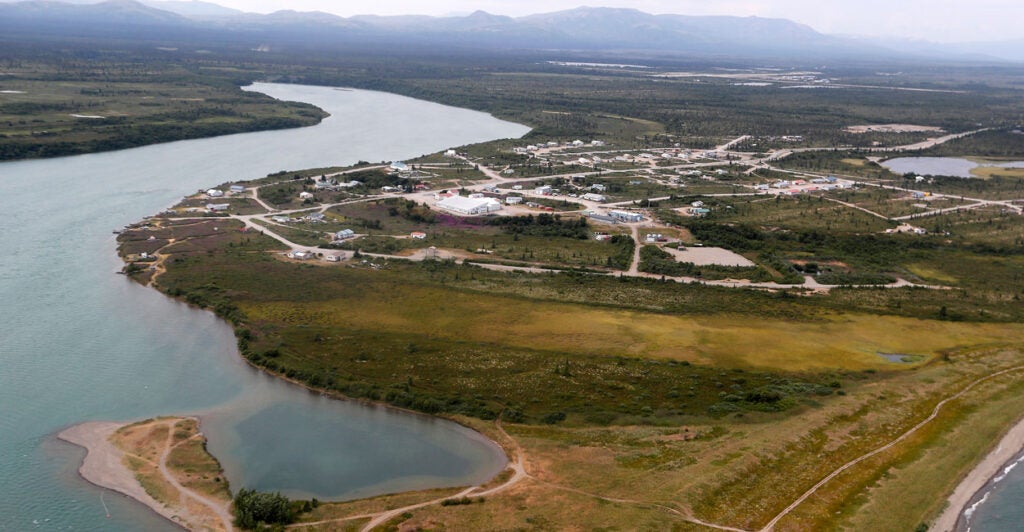A battle over a proposed copper and gold mine in Alaska that has lasted more than a decade took another turn recently as the Army Corps of Engineers pressed pause on a permit for the project to move forward.
The Army Corps’ letter to Pebble Limited Partnership did not kill the project, but requires additional mitigation plans for open waters, wetlands, and streams. With a number of high-profile politicians, organizations, and celebrities opposing the mine, it is critical that sound, objective science guide the permitting process.
A bit of backstory is in order. Located in southwest Alaska, Pebble Mine has an abundance of gold, copper, and molybdenum. It is home to at least 70 known occurrences of rare earth elements, which are critical for numerous industries, from cellphones to electric batteries to military weapons.
Opponents argue that the mine and transportation routes would threaten nearby Bristol Bay, which is home to the world’s largest commercial sockeye salmon fishery and is important for subsistence fishing and a popular spot for fishing trips.
On the other hand, the developers argue that the on-site water will be managed and treated, and through mitigation plans, “managed water will account for only a hundredth of a percent of the water which flows into Bristol Bay.”
They liken the development to the Gibraltar copper mine near Williams Lake, the fourth-largest mine in North America, which treats the water carefully enough that fish live in the seepage pools.
In 2014, the Obama administration prohibited the mining project from even submitting a permit by issuing a preemptive veto (the first ever under the Clean Water Act), citing ecological concerns.
However, the assessment was seriously flawed, as the Obama-era Army Corps made its determination based on an environmental analysis of a theoretical mine that would not come close to meeting state and federal standards for mining activities.
After a lot of back-and-forth and several lawsuits later, the Environmental Protection Agency’s regional administrator announced the withdrawal of the 2014 proposed determination, and a return to the established process to approve or reject the permit application through an environmental impact assessment.
In conducting its environmental review, the Army Corps concluded that the project “would not be expected to have a measurable effect on fish numbers and result in long-term changes to the health of the commercial fisheries in Bristol Bay.”
However, in a letter to the company, the Alaska District of the Army Corps asserted that “factual determinations that discharges at the mine site would cause unavoidable adverse impacts to aquatic resources and, preliminarily, that those adverse impacts would result in significant degradation to those aquatic resources.”
Its determination finds that the project would directly and indirectly impact about 3,285 acres of wetlands, 364 acres of open waters, and 185 miles of streams from the mine site and transportation corridors. Consequently, it concluded that the project cannot be permitted as currently proposed. Pebble Limited Partnership has 90 days to submit a plan that would sufficiently mitigate these impacts.
Policymakers, developers, and the general public should want objective, transparent science and analysis to guide an environmental assessment.
Alaskans, in particular, whose communities are affected by the decision, should undoubtedly have their voices heard. They are the ones who have the most to gain when natural resources are managed properly, allowing all to benefit from increased economic activity.
They also have the most to lose as a result of mismanagement.
At the same time, factually incorrect statements and mischaracterization of risk can mislead the public. Simply put, the Army Corps should conduct an objective assessment when making a determination to approve or deny the permit.
Alaskans have long understood that energy development, tourism, commercial fishing, the interest of indigenous communities, and ecological protection can all co-exist. However, Pebble Mine is putting that harmonization of economic development and environmental protection to the test.
Rigorous permitting processes are put in place for a reason, and companies have a strong financial and public image incentive to safely operate. Facts and data, not science by politics, should drive Army Corps’ permitting decisions. Pebble should be no different.
